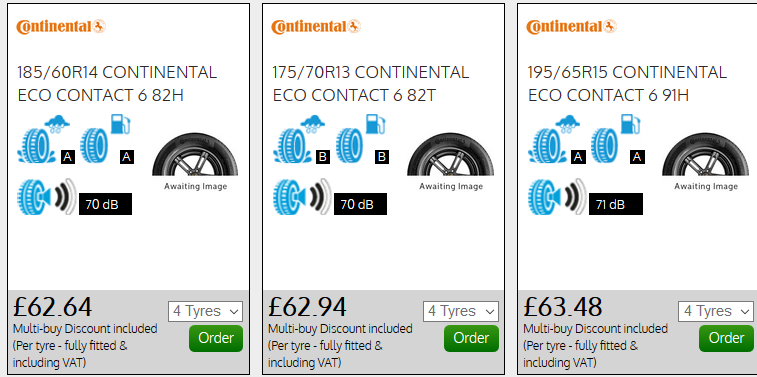In Part One of this post, we looked at the environmental costs of tyres, and how to reduce that impact. Part Two looks at more ways of going green with your tyres, without hurting your bank account.
Choosing ‘Greener’ Tyres
Many environmentally-conscious customers are in search of a greener tyre. But although all major companies are working at making more sustainable tyres, to be honest we’re some way off a truly planet-friendly product.
The incredible performance we see in modern tyres results from dozens of specially enginered compounds working together. Many are derived from petroleum, and replacing these is going to take time and a gobsmacking amount of research.
So is there any such thing as a green tyre? In a sense, yes.
Hard-wearing ‘green’ tyres
And as we saw in Part One, making your tyres last longer is a great way of being environmentally friendly. Hard-wearing tyres don’t need to be replaced so often, reducing the environmental burdens of manufacture and disposal.
So which are the hardest-wearing tyres? In general, you tend to get what you pay for. Premium or mid-range tyres will often offer significantly more mileage than a budget tyre. For example, a haulage company discovered that their budget tyres delivered, on average, 17,000 miles less mileage than their usual premium-quality Bridgestones.
Having said that, not all brands are created equal, and some medium-range tyres are capable of outperforming much more expensive tyres. So, for more specific advice, get in touch with our tyre experts.
Low rolling resistance ‘green’ tyres
When manufacturers refer to ‘green tyres’, they usually mean tyres with a lower rolling resistance. Rolling resistance refers to how much energy is needed to keep the tyre moving along the road. Tyres with low rolling resistance need less energy to keep moving — and that translates into using less fuel and reducing the carbon footprint of your journey.
Fortunately, picking a low rolling resistance tyre is dead easy. It forms part of the EU tyre labelling system that’s been around for some time. Take a look at these three tyres from our range of Continentals:
The rolling resistance is the blue tyre symbol with — you guessed it — a fuel pump above it. So from left to right, these three tyres have ratings of A, B and A.
As rolling resistance is rated on an A to E scale, you can see that these particular tyres have very low rolling resistance and are therefore very fuel-efficient. You can see why Continental call them ‘Eco’!
Will buying ‘green tyres’ cost me any more?
In two words, ‘probably not’. High-quality, hard-wearing tyres may cost more, but most drivers will recoup that cost, because they will last longer. Low rolling resistance tyres are designed to save you fuel.
Once again, it turns out that when it comes to tyres, choices that help the planet can also help your bank balance.
One last thing: resposible tyre disposal
In Part One, we mentioned that tyres are one of the most frequently fly-tipped items and that tyre dumps are an environmental nightmare. So, the final thing you can do to make your tyres greener is think about how you dispose of your old ones.
Responsible suppliers (like BK Tyres) ensure that their tyres are disposed of properly. In practice, that means recycling them or using them for fuel. Just ask how your supplier gets rid of theirs — it won’t cost you a penny!
The BK Tyres blog carries news, views and information on tyres and related subjects. BK Tyres is a supplier and fully mobile fitter of tyres throughout South Oxfordshire. Contact us today.


